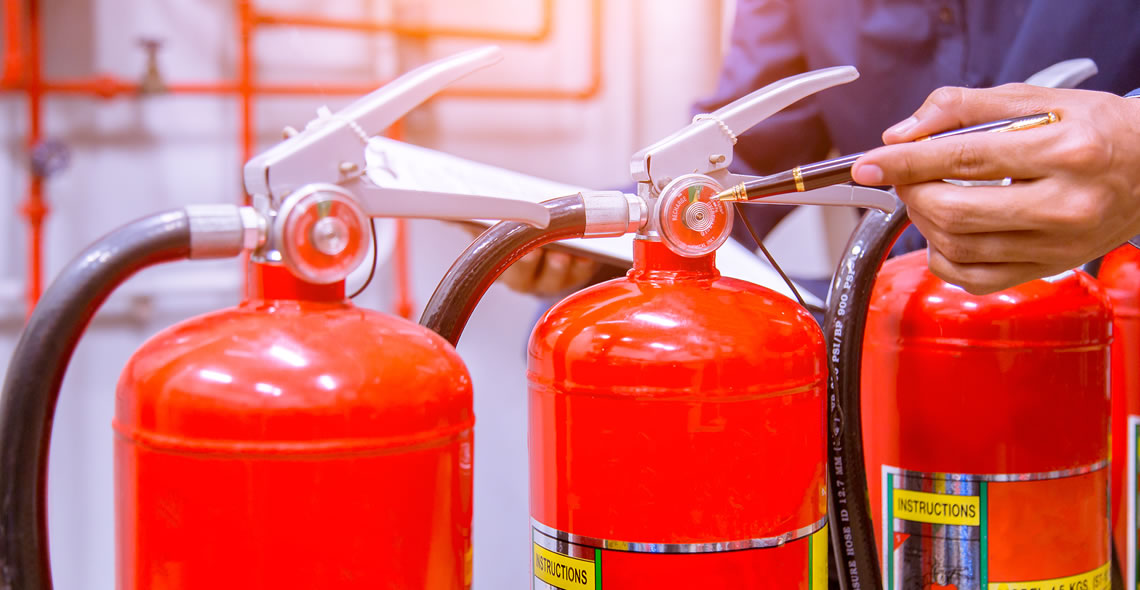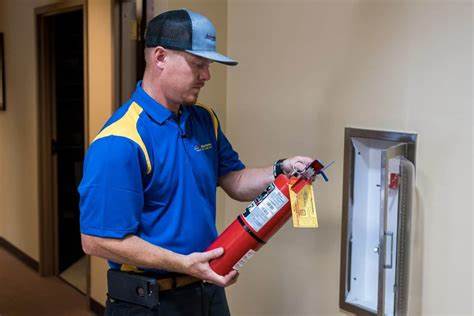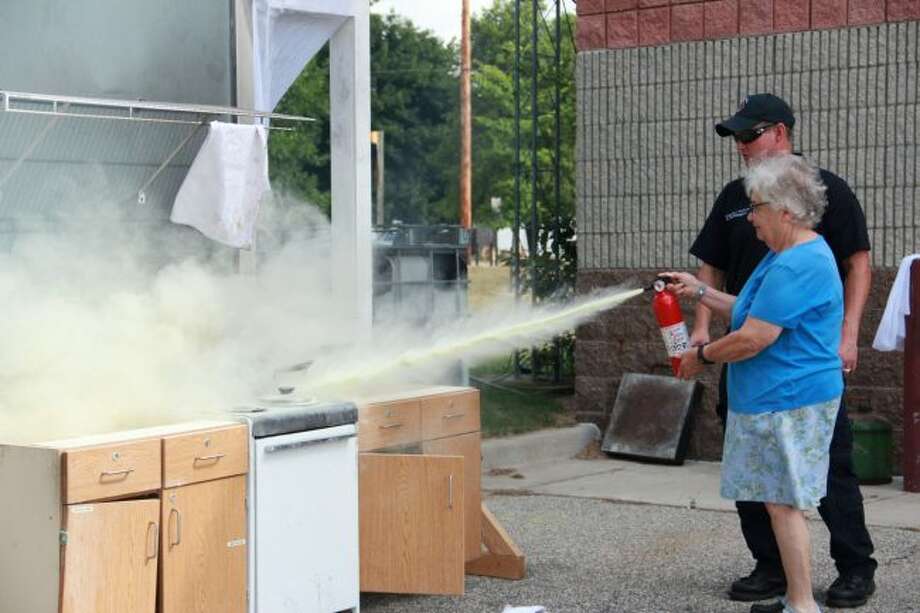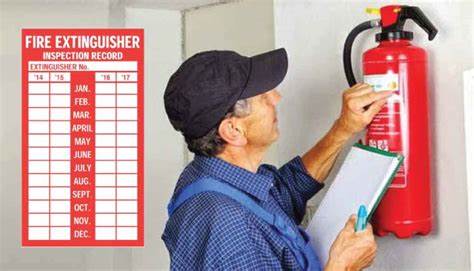Fire Extinguisher Placement and Accessibility For Seniors
Fire safety is a crucial concern for individuals of all ages, but it holds particular importance for seniors. As we age, our mobility and reaction time may decrease, making it essential to have proper fire prevention measures in place. One such measure is the strategic placement and accessibility of fire extinguishers. In this comprehensive guide, we will explore the significance of fire extinguisher placement and accessibility, offering practical tips for seniors to ensure their safety in case of a fire emergency.
Statistics For The Elderly Ages 65 and over. By U.S. Fire Administration
The trend in the fire death rate per million population for older adults (ages 65 and over) increased by 16% from 2012 to 2021. In 2021, the fire death rate for people in this age group was 33.9 deaths per million population – the highest fire death rate for this age group over the 10 years. The older adult population faces the greatest relative risk of dying in a fire. In 2021, the relative risk of dying in a fire for older adults was 2.6 times higher than that of the general population.
Understanding Fire Extinguishers
Intro

Before delving into the specifics of placement and accessibility, it is essential to understand the different types of fire extinguishers and their uses. Fire extinguishers are classified based on the type of fire they can extinguish effectively. The four common types are:
- Class A: Suitable for extinguishing fires involving ordinary combustible materials like wood, paper, and cloth.
- Class B: Designed for fires involving flammable liquids such as gasoline, oil, and grease.
- Class C: Specifically designed for fires caused by electrical equipment and appliances.
- Class K: Intended for fires that involve cooking oils and fats, commonly found in kitchens.
By having the appropriate type of fire extinguisher for your specific needs, you can effectively combat different fire scenarios.
Determining Fire Extinguisher Placement
Placement

Strategic placement: Fire Extinguisher Placement and Accessibility
Strategic placement of fire extinguishers is crucial to ensure they can be accessed quickly in case of a fire emergency. Here are some key guidelines to follow when determining their placement:
- Kitchen: Place a fire extinguisher near the kitchen area, as cooking-related fires are common. Mount it in an easily reachable location, away from the stove but within arm’s reach.
- Bedrooms: Install fire extinguishers near sleeping areas to enable quick response during nighttime emergencies. Ensure they are within reach, mounted on the wall or kept on a bedside table.
- Living Areas: Place fire extinguishers in common living areas, such as the living room or den. Consider mounting them at a height that is easily accessible for everyone in the household, including seniors with mobility challenges.
- Garage and Workshop: If you have a garage or workshop, it is essential to have a fire extinguisher nearby. Flammable materials and tools increase the risk of fire, so keep one within easy reach of these areas.
Ensuring Accessibility for Seniors
Access

Seniors may face unique challenges during a fire emergency due to decreased mobility or other physical limitations. To ensure accessibility to fire extinguishers, consider the following suggestions:
- Proper Height Placement: Mount fire extinguishers at a height that allows seniors to access them comfortably. Avoid placing them too high or too low, considering their reach and any mobility aids they use.
- Brackets and Mounts: Utilize fire extinguisher brackets or mounts for secure placement. These accessories ensure that the extinguisher remains in place and easily accessible when needed.
- Clear Pathways: Maintain clear and unobstructed pathways to fire extinguishers. Remove any clutter, furniture, or other objects that may hinder quick access during an emergency.
- Multi-Story Homes: In houses with multiple levels, consider installing fire extinguishers on each floor. This way, seniors won’t have to navigate stairs or long distances to reach one in an emergency.
Maintenance and Inspection
Maintenance

Proper maintenance and regular inspection of fire extinguishers are crucial for their reliability. Follow these steps to ensure their functionality:
- Pressure Gauge Check: Monitor the pressure gauge on the fire extinguisher regularly. Ensure it remains within the recommended range. If the needle falls outside the designated area, contact a professional to inspect or recharge the extinguisher.
- Unobstructed Access: Ensure that the area around the fire extinguisher remains unobstructed at all times. Check for any objects or debris that may have inadvertently accumulated near the extinguisher and remove them promptly.
- Physical Damage and Corrosion: Inspect the fire extinguisher for any signs of physical damage, such as dents, cracks, or leakage. Additionally, look for corrosion on the canister or nozzle. If you notice any damage or corrosion, it is crucial to have the extinguisher serviced or replaced immediately.
- Periodic Testing: Follow the manufacturer’s guidelines regarding the recommended frequency of testing. Some extinguishers may require periodic shaking or other tests to ensure their contents remain properly mixed and ready for use.
Frequently Asked Questions
FAQs
What is the OSHA requirement for fire extinguisher placement?
OSHA has specific requirements for fire extinguisher placement in the workplace. The general rule is that fire extinguishers should be easily accessible, visible, and located in areas where potential fire hazards exist. OSHA regulations state that fire extinguishers should be placed within 75 feet of travel distance from any point within the facility, and employees should be able to reach a fire extinguisher within 30 seconds.
Where should fire extinguishers be placed?
Fire extinguishers should be strategically placed in locations
What is the ADA code for fire extinguishers?
The Americans with Disabilities Act (ADA) does not specifically address fire extinguisher placement. However, it does require that individuals with disabilities have equal access and opportunity to use facilities and services. This means that fire extinguishers should be placed in locations that are accessible to individuals with disabilities. Fire extinguishers should not be obstructed by furniture, equipment, or other barriers that would prevent someone with a disability from reaching and using them.
What must be done to ensure accessibility to appropriate fire extinguishers in the event of a fire?
What must be done to ensure accessibility to appropriate fire extinguishers in the event of a fire? To ensure accessibility to fire extinguishers during a fire emergency, the following steps can be taken:
Keep fire extinguishers unobstructed and clearly visible at all times.
Ensure that fire extinguishers are properly mounted on walls or placed on stands, at a height and location that is easily reachable for individuals of varying heights and abilities.
Provide clear signage indicating the location of fire extinguishers.
Conduct regular inspections to ensure that fire extinguishers are in good working condition and not damaged or blocked.
Train employees or occupants on the proper use of fire extinguishers and the steps to take in the event of a fire.
Other Places For You To Explore
Exploring
Conclusions
Final
Fire safety is of utmost importance for seniors, and proper fire extinguisher placement and accessibility are critical elements of a comprehensive fire prevention strategy. By strategically placing fire extinguishers in key areas, ensuring easy accessibility, and maintaining them regularly, seniors can enhance their safety and be better prepared to handle fire emergencies. Remember to check the pressure gauge, keep access unobstructed, and conduct periodic inspections. By following these guidelines and incorporating fire safety practices into their daily lives, seniors can enjoy greater peace of mind and independence.
Implement the recommendations outlined in this guide to safeguard your home and empower yourself in fire emergency situations. Stay safe, stay prepared!






